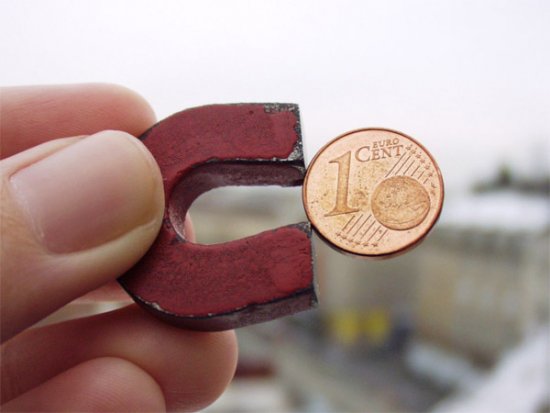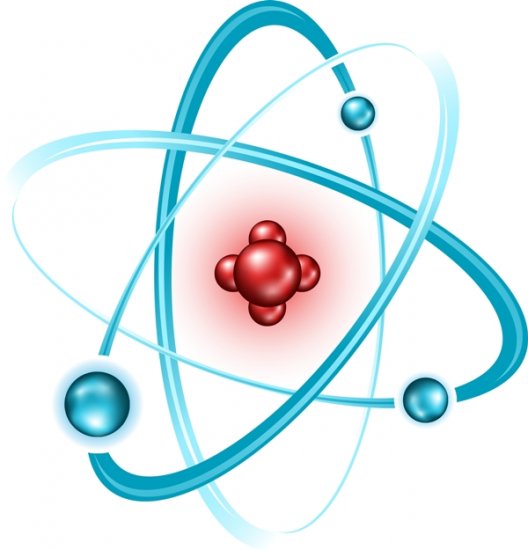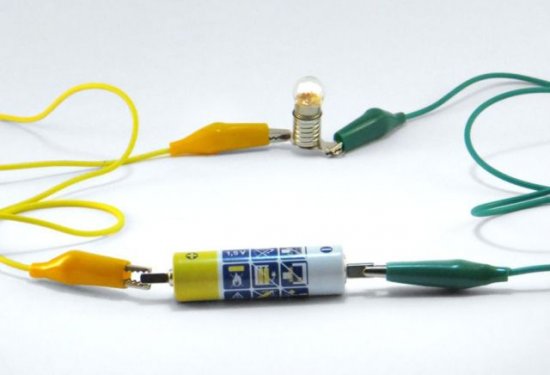Electricity and magnetism, basic definitions, types of moving charged particles
The "science of magnetism", like most other disciplines, is based on very few and rather simple concepts. They are quite simple, at least in terms of "what they are", although it is a bit more difficult to explain "why they are". Once accepted as such, they can be used as basic building blocks for the development of an entire discipline of study. At the same time, they serve as guidelines in attempts to explain observed phenomena.
First, there is such a thing as "electron"… Electrons don't just exist—they are myriad everywhere we look.
Electron is an object of negligible mass that carries a unit negative electric charge and rotates about its axis at a certain constant speed. One of the manifestations of the movement of electrons is electric currents; in other words, electric currents are "carried" by electrons.
Second, there is such a thing as "field"which can be used to transmit energy through what is otherwise empty space.In this sense, there are three main types of fields — gravitational, electric and magnetic (see — Differences between electric and magnetic field).
Third, according to Ampere's ideas each moving electron is surrounded by a magnetic field… Since only spin electrons are electrons in motion, a magnetic field is created around each electron with spin. Consequently, each electron acts as a microminiature permanent magnet.
Fourth, according to Lorentz's ideas a certain force acts on an electric charge moving in a magnetic field… It is the result of the interaction of the external field and Ampere's field.
Finally, matter retains its integrity in space thanks to attractive forces between particles, whose electric field is generated by their electric charge, and the magnetic field — their rotation.
All magnetic phenomena can be explained on the basis of the motion of particles that have both mass and electric charge. Possible types of such particles include the following:
Electrons
An electron is an electrically charged particle of very small size. Each electron is identical in every respect to every other electron.
1. An electron has a negative unit charge and negligible mass.
2. The mass of all electrons always remains constant, although the apparent mass is subject to changes depending on environmental conditions.
3. All electrons spin about their own axis — have a spin with the same constant angular velocity.
Holes
1. A hole is called a certain position in the crystal lattice, where it could be, but under these conditions there is no electron. Thus, the hole has a positive unit charge and negligible mass.
2.The movement of the hole causes the electron to move in the opposite direction. Therefore, a hole has exactly the same mass and the same spin as an electron moving in the opposite direction.
Protons
A proton is a particle that is much larger than an electron and has an electric charge that is absolutely equal in absolute value to the charge of an electron, but has the opposite polarity. The concept of opposite polarity is defined by the following opposite phenomena: an electron and a proton experience an attractive force toward each other, while two electrons or two protons repel each other.
In accordance with the convention adopted in Benjamin Franklin's experiments, the charge of the electron is considered negative and the charge of the proton is positive. Since all other electrically charged bodies carry electric charges, positive or negative, whose values are always exact multiples of the electron charge, the latter is used as the "unit value" when describing this phenomenon.
1. A proton is an ion with a positive unit charge and a unit molecular weight.
2. The positive unit charge of the proton absolutely coincides in absolute value with the negative unit charge of the electron, but the mass of the proton is many times greater than the mass of the electron.
3. All protons rotate around their own axis (have spin) with the same angular velocity, which is much smaller than the angular velocity of electron rotation.
See also: The structure of atoms — elementary particles of matter, electrons, protons, neutrons
Positive ions
1.Positive ions have different charges whose values are an integer multiple of the proton's charge, and different masses whose values consist of an integer multiple of the proton's mass and some additional mass of subatomic particles.
2. Only ions with an odd number of nucleons have spin.
3. Ions of different masses rotate with different angular velocities.
Negative ions
1. There are varieties of negative ions, completely analogous to positive ions, but carrying a negative rather than a positive charge.
Each of these particles, in any combination, can move along different straight or curved paths at different speeds. A collection of identical particles moving more or less as a group is called a beam.
Each particle in the beam has a mass, direction and speed of motion close to the corresponding parameters of neighboring particles. However, under more general conditions, the velocities of the individual particles in the beam differ, obeying Maxwell's law of distribution.
In this case, the dominant role in the appearance of magnetic phenomena is played by particles whose speed is close to the average speed of the beam, while particles with other speeds generate second-order effects.
If the main attention is paid to the speed of movement of the particles, then the particles moving at a high speed are called hot, and the particles moving at a low speed are called cold. These definitions are relative, that is, they do not reflect any absolute speeds.
Basic laws and definitions
There are two different definitions of magnetic field: magnetic field — This is an area near moving electric charges where magnetic forces are exerted.Any region where an electrically charged body experiences a force as it moves contains a magnetic field.
An electrically charged particle is surrounded electric field… A moving electrically charged particle has a magnetic field along with an electric one. Ampere's law establishes the relationship between moving charges and magnetic fields (see — Ampere's Law).
If many small electrically charged particles continuously pass through the same part of the trajectory at a constant speed, then the total effect of individual moving magnetic fields of each particle amounts to the formation of a permanent magnetic field known as fields of Bio Savara.
Special case Ampere's Law, called Bio-Savard's law, determines the magnitude of the magnetic field strength at a given distance from an infinitely long straight wire through which an electric current flows (Biot-Savard's law).
So the magnetic field has a certain strength. The greater the moving electric charge, the stronger the resulting magnetic field. Also, the faster the electric charge moves, the stronger the magnetic field.
A stationary electric charge does not generate any magnetic field. In fact, a magnetic field cannot exist independently of the presence of a moving electric charge.
Lorentz's law defines the force acting on a moving electrically charged particle in a magnetic field. Lorentz force directed perpendicular to both the direction of the external field and the direction of motion of the particle. There is a "lateral force" acting on charged particles when they move at right angles to the magnetic field lines.
A "magnetically charged" body in an external magnetic field experiences a force that tends to move the body from a position where it strengthens the external field to a position where the external field would weaken. This is the manifestation of the following principle: all systems tend to reach a state characterized by minimum energy.
Lenz's rule states: "If the trajectory of a moving charged particle changes in any way as a result of the particle's interaction with a magnetic field, then these changes lead to the appearance of a new magnetic field exactly opposite to the magnetic field that caused these changes. «
The ability of a solenoid to create a "flowing" magnetic flux through a magnetic circuit depends on both the number of turns of the wire and the current flowing through them. Both factors lead to the occurrence magnetomotive force or MDS for short… Permanent magnets can create a similar magnetomotive force.
The magnetomotive force makes the magnetic flux flow in the magnetic circuit in the same way as electromotive force (EMF) ensures the flow of electric current in an electrical circuit.
Magnetic circuits are in some ways analogous to electric circuits, although in electric circuits there is actual motion of charged particles, while in magnetic circuits there is no such motion. The action of the electromotive force that generates an electric current is described Ohm's Law.
Magnetic field strength Is the magnetomotive force per unit length of the corresponding magnetic circuit. Magnetic induction or flux density is equal to the magnetic flux passing through a unit area of a given magnetic circuit.
Reluctance Is a characteristic of a certain magnetic circuit that determines its ability to conduct magnetic flux in response to the action of a magnetomotive force.
The electrical resistance in ohms is directly proportional to the length of the path of the flow of electrons, inversely proportional to the cross-sectional area of this flow, and also inversely proportional to the electrical conductivity, a characteristic that describes the electrical properties of the substance that makes up the current-carrying region of space.
Magnetic resistance is directly proportional to the length of the path of the magnetic flux, inversely proportional to the cross-sectional area of this flux, and also inversely proportional to the magnetic permeability, a characteristic that describes the magnetic properties of the substance of which the space that carries the magnetic flux is composed. (see — Ohm's law for a magnetic circuit).
Magnetic permeability A characteristic of a substance that expresses its ability to maintain a certain magnetic flux density (see — Magnetic permeability).
More on this topic: Electromagnetic field - history of discovery and physical properties



